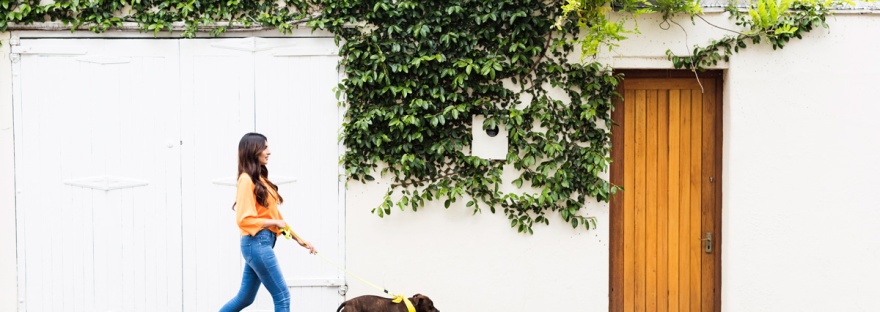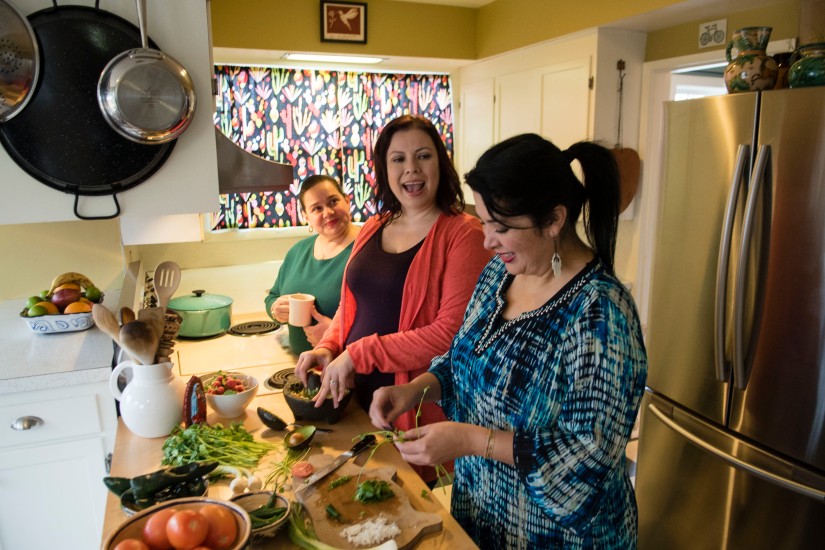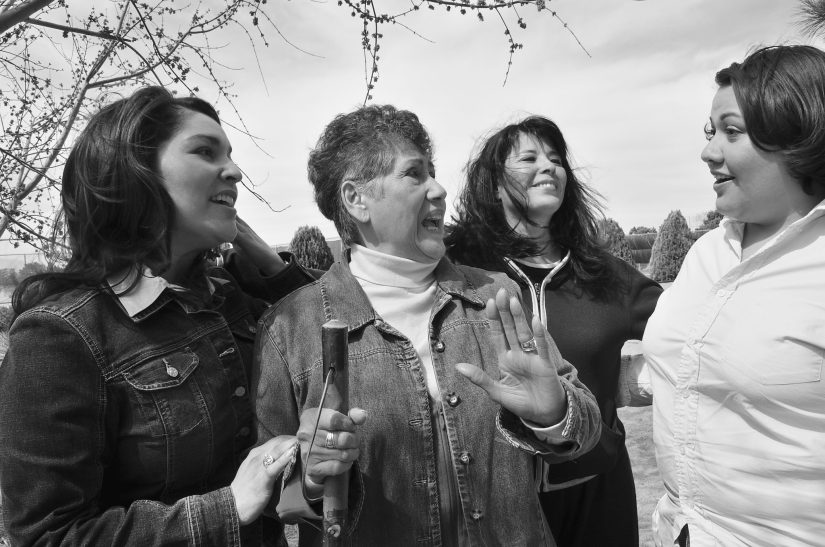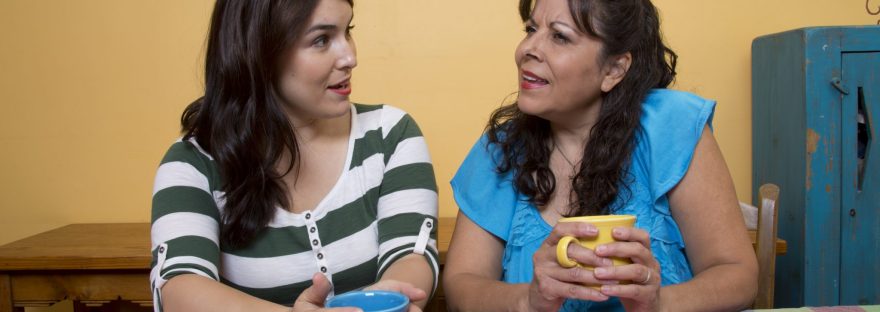
Are you stressed out? I know I am! My natural way of being is kind of high-strung. I am, what my Mexican family calls, nerviosa. So yes, high-strung, hyper, even at times, a bit over the edge. Some people may even call me anxious, like the Mexican version of Woody Allen. But I still prefer nerviosa which simply means – nervous.
The truth is, life is very stressful and some lives are more stressful than others. But did you know that stress can keep you from achieving a healthy weight? There is this hormone, cortisol, that some scientists refer to as the stress hormone, and when we get overly stressed, we produce more of this hormone than normal. And sometimes, some of us may have cortisol interfere with our healthy weight goals.
Of course we also know that we can’t blame it all on cortisol. We know that sometimes, when we are overly stressed we reach for crunchy, fat-filled foods like chicharrones, Cheetos and potato chips, or the sugary stuff like candy bars, pan dulce, churros and pulpitas de tamarindo.
Emotional eating is easily converted into overeating, and overeating leads us to unhealthy weight gain and sometimes even self-loathing.
In today’s article, I want to cover 3 basic pieces of advice and a special tool for your toolbox.
First, let’s talk about mindfulness. You hear a lot about mindfulness now. Mindful eating, mindful listening, mindful shopping, you name it. It’s a very simple concept, really. Being mindful is paying attention. So the first piece of advice from me to you is — be mindful. Pay attention. Pay attention to what you eat. Pay attention to how you treat your body. Pay attention to what makes you feel good and what makes you feel bad. Pay more attention today than you did yesterday. And tomorrow, try it again.
Second, use your mindfulness to check in with yourself regarding your cravings and your hunger pangs. If you come home, nerviosa, from a hectic day at work, and you want something to eat, pay attention to what you want. Practicing your mindfulness, ask yourself if you are physically hungry or emotionally hungry. Just ask yourself that question. Try it. If you answer ‘physically hungry,’ pick up something healthy like an apple, an orange or a pepino with chilito y limón. If after you eat something healthy, you are still hungry, the sure bet is that you are emotionally hungry. You need an emotional snack. Call your comadre, hug your husband or partner, kiss your kid on the head, play with your dog.
Third, learn to meditate. I know what you’re thinking. You can’t sit still, either? That’s me. Sometimes I am so nerviosa, that I can’t sit still to take a deep breath. Sitting still to take deep breaths when I am so nerviosa, just makes me twitch. But we know that the value of meditation is enormous. There is a lot of research on the benefits of meditation and deep relaxation. It’s been there for many years and it’s held up. But some of us, hyper-active nerviosa types just can’t sit still. So here’s a simple tool for your toolbox: Walking Meditation.
Here’s how it goes:
1. Get yourself some comfy shoes.
They don’t have to break the bank or impress the neighbors.They just have to provide you with support to take a nice leisurely walk. Now remember, this walk is not intended to get your cardio up, although you can walk as fast as you want.The intention of this walk is for you to chill out.
2. Take some deep cleansing breaths.
Three usually does the trick. Breathe in through your nose and out through your mouth.
3. Now walk.
Go by yourself or with your calm dog. If your dog is just as hyper and nervioso as you are, take him later. Right now your mission is to let the stress fall away from your body and your mind.
4. Go back to mindfulness.
Walk mindfully. This means pay attention to how you feel as you walk. Pay attention to your feet as they touch down on the ground. Pay attention to your heel as it touches the ground and how the rest of your foot follows. Relax your arms and let them swing in a natural way and pay attention to them as they move through the air. Pay attention to your surroundings, the sensations you feel as you breathe in. Keep your attention on walking. Thoughts will come, worries will come, your to-do list might haunt you, but your job right now is to take a walk and pay attention to yourself, your body, your breath, and your surroundings. One trick that works for me, when I get lots of distracting chatter in my brain, is to simply say to myself, “walking.” Repeat that each time some random thought comes in to distract you. Walking. Walking. Walking.
5. Walk for 15 minutes.
Set the intention that you are doing this for yourself. Do it. See how it feels. Some people like to play soft music, but I would advise you to just do it a la natural for a few times and see how it feels. You can add soft music later if you like. For now just walk mindfully for 15 minutes because you deserve this sacred time for yourself.
6. When you are done, take a deep breath and look around.
Smile. How does it feel?
Now that you have given yourself this nice little walking meditation gift, if you feel like going for a power walk and get your heart rate up, knock yourself out. You can go back for your crazy dog or your kids now, if they wanted to come with you, but those 15 minutes are yours and yours alone. You will benefit by lowering your stress level, curbing the cortisol, and being healthier than you were 15 minutes ago.
We would love to hear from you. Is this content useful? Does our advice make sense? Let us know, so we can provide you with the right kind of information that you can use to be healthier and happier!
〰️
The De Las Mias app is free and ready for download in the Google Play Store. Follow us on Facebook and Instagram @delasmiaslife.






 Nos cuenta nuestra comadre, Liz…“A mí, siempre me ha encantado el campo. Cuando Marty y yo andábamos de novios, salíamos a caminar por el campo todos los fines de semana. Era mi manera favorita de mantenerme “fit” y para mí, salir a caminar es esencial para manejar el estrés. Cuando vinieron los niños, yo quería que ellos también disfrutaran de esta actividad tan sana y bella.” “Al principio me daban nervios sacarlos al campo. Mis hijos siempre han sido inquietos y tienen mucha energía,” nos dice Liz. “Ya me imaginaba que Ricardo se quebraba un brazo trepando árboles y que Agustín se caía por una barranca por correr en lugar de caminar.” Liz aprendió muy pronto que llevar a niños menores de 6 años a una verdadera caminata en el campo no era realístico. “Pues me di cuenta de que estaban demasiados pequeños para largos trechos y me tuve que adaptar.” Entonces se decidió que era muy importante tener un plan para los niños más pequeños. “A los más pequeños se los lleva uno con el plan de salir al aire libre, gozar de un día bonito y de jugar.” Ya de la edad de los 7-9, se les puede llevar con el plan de ir por una excursión más larga. Determinada a inculcarles el amor a la naturaleza, Liz siguió con su plan y empezó una tradición familiar muy bella. “La primavera es la temporada ideal para comenzar aventuras en la naturaleza. Empezamos despacio y poco a poco nos fuimos convirtiendo en una familia aventurera. Ahora a mis muchachos les encanta el campo y las excursiones. ¡La pasamos divino juntos y es una de las cosas que nos hace sentir más fuertes, unidos, y saludables!” Liz nos compartió estos tips en cómo disfrutar de actividades en la naturaleza con tus hijos:
Nos cuenta nuestra comadre, Liz…“A mí, siempre me ha encantado el campo. Cuando Marty y yo andábamos de novios, salíamos a caminar por el campo todos los fines de semana. Era mi manera favorita de mantenerme “fit” y para mí, salir a caminar es esencial para manejar el estrés. Cuando vinieron los niños, yo quería que ellos también disfrutaran de esta actividad tan sana y bella.” “Al principio me daban nervios sacarlos al campo. Mis hijos siempre han sido inquietos y tienen mucha energía,” nos dice Liz. “Ya me imaginaba que Ricardo se quebraba un brazo trepando árboles y que Agustín se caía por una barranca por correr en lugar de caminar.” Liz aprendió muy pronto que llevar a niños menores de 6 años a una verdadera caminata en el campo no era realístico. “Pues me di cuenta de que estaban demasiados pequeños para largos trechos y me tuve que adaptar.” Entonces se decidió que era muy importante tener un plan para los niños más pequeños. “A los más pequeños se los lleva uno con el plan de salir al aire libre, gozar de un día bonito y de jugar.” Ya de la edad de los 7-9, se les puede llevar con el plan de ir por una excursión más larga. Determinada a inculcarles el amor a la naturaleza, Liz siguió con su plan y empezó una tradición familiar muy bella. “La primavera es la temporada ideal para comenzar aventuras en la naturaleza. Empezamos despacio y poco a poco nos fuimos convirtiendo en una familia aventurera. Ahora a mis muchachos les encanta el campo y las excursiones. ¡La pasamos divino juntos y es una de las cosas que nos hace sentir más fuertes, unidos, y saludables!” Liz nos compartió estos tips en cómo disfrutar de actividades en la naturaleza con tus hijos:










